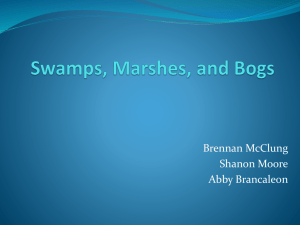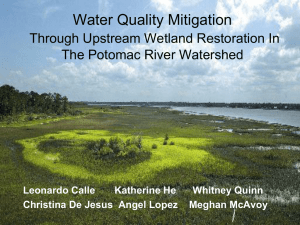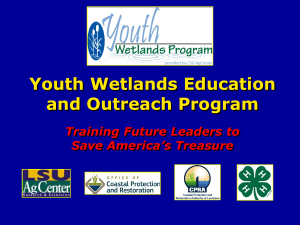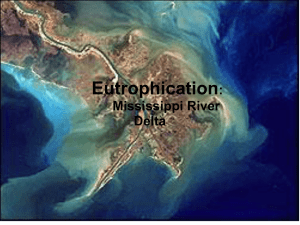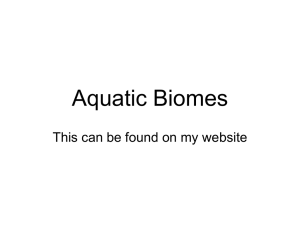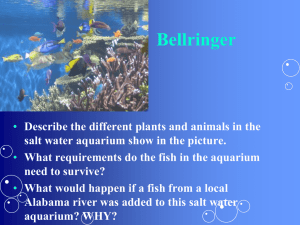What_are_scientists_trying_to_find_out
advertisement
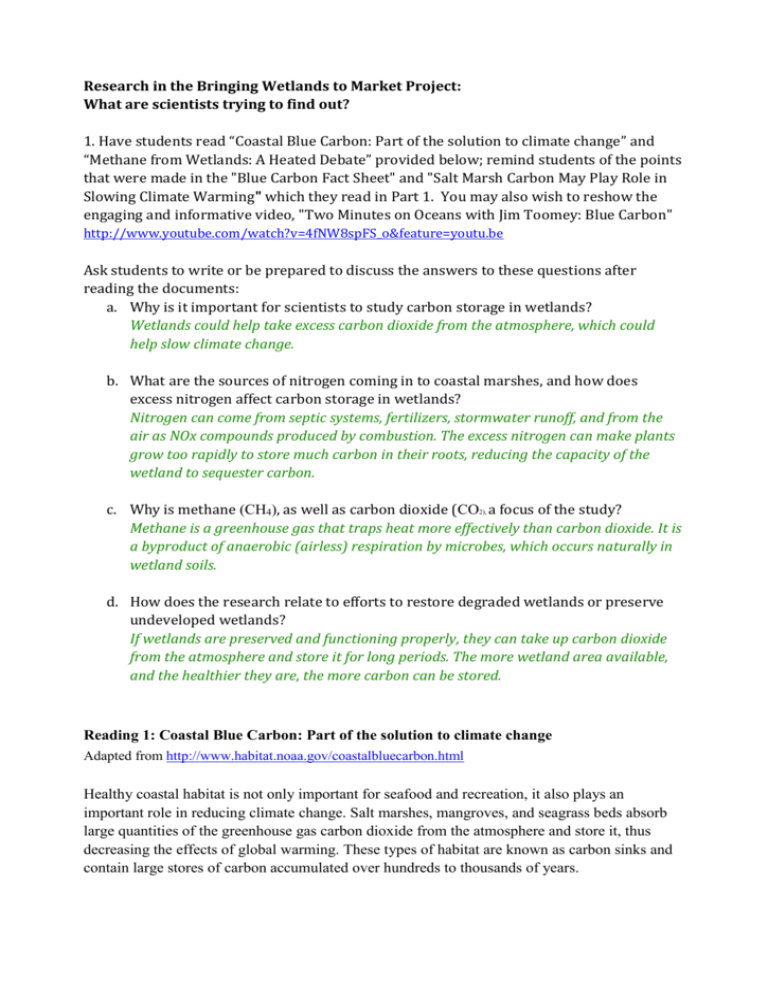
Research in the Bringing Wetlands to Market Project: What are scientists trying to find out? 1. Have students read “Coastal Blue Carbon: Part of the solution to climate change” and “Methane from Wetlands: A Heated Debate” provided below; remind students of the points that were made in the "Blue Carbon Fact Sheet" and "Salt Marsh Carbon May Play Role in Slowing Climate Warming" which they read in Part 1. You may also wish to reshow the engaging and informative video, "Two Minutes on Oceans with Jim Toomey: Blue Carbon" http://www.youtube.com/watch?v=4fNW8spFS_o&feature=youtu.be Ask students to write or be prepared to discuss the answers to these questions after reading the documents: a. Why is it important for scientists to study carbon storage in wetlands? Wetlands could help take excess carbon dioxide from the atmosphere, which could help slow climate change. b. What are the sources of nitrogen coming in to coastal marshes, and how does excess nitrogen affect carbon storage in wetlands? Nitrogen can come from septic systems, fertilizers, stormwater runoff, and from the air as NOx compounds produced by combustion. The excess nitrogen can make plants grow too rapidly to store much carbon in their roots, reducing the capacity of the wetland to sequester carbon. c. Why is methane (CH4), as well as carbon dioxide (CO2), a focus of the study? Methane is a greenhouse gas that traps heat more effectively than carbon dioxide. It is a byproduct of anaerobic (airless) respiration by microbes, which occurs naturally in wetland soils. d. How does the research relate to efforts to restore degraded wetlands or preserve undeveloped wetlands? If wetlands are preserved and functioning properly, they can take up carbon dioxide from the atmosphere and store it for long periods. The more wetland area available, and the healthier they are, the more carbon can be stored. Reading 1: Coastal Blue Carbon: Part of the solution to climate change Adapted from http://www.habitat.noaa.gov/coastalbluecarbon.html Healthy coastal habitat is not only important for seafood and recreation, it also plays an important role in reducing climate change. Salt marshes, mangroves, and seagrass beds absorb large quantities of the greenhouse gas carbon dioxide from the atmosphere and store it, thus decreasing the effects of global warming. These types of habitat are known as carbon sinks and contain large stores of carbon accumulated over hundreds to thousands of years. Using more scientific lingo, coastal blue carbon is the carbon captured by living coastal and marine organisms and stored in coastal ecosystems. Salt marshes, mangroves, and seagrass beds play two important roles: Carbon sequestration—the process of capturing carbon dioxide from the atmosphere, measured as a rate of carbon uptake per year Carbon storage—the long-term confinement of carbon in plant materials or sediment, measured as a total weight of carbon stored Why are wetlands important for helping to slow climate change? Current studies suggest that mangroves and coastal wetlands annually sequester carbon at a rate two to four times greater than mature tropical forests and store three to five times more carbon per equivalent area than tropical forests. Most coastal blue carbon is stored in the soil, not in above-ground plant materials (biomass), as is the case with tropical forests. Although coastal habitats provide a great service in capturing carbon, their destruction poses a great risk. When these habitats are damaged or destroyed, not only is their carbon sequestration capacity lost, but stored carbon is released and contributes to increasing levels of greenhouse gases in the atmosphere. As a result, damaged or destroyed coastal habitats change from being net carbon sinks to net carbon emitters. Unfortunately, coastal habitats around the world are being lost or degraded at a rapid rate, largely due to coastal development for housing, ports, commercial facilities, and recreation pressure. Cape Cod salt marsh impacted by recreational fishing and herbivores Photo: Tyler Coverdale Research suggests that nitrogen from septic systems, stormwater runoff, and the air can significantly reduce a wetland’s ability to store carbon. In some cases, high nitrogen pollution can increase the rate at which carbon breaks down in coastal wetland soils, leading to the release of carbon dioxide and nitrous oxide (a greenhouse gas that is about 300 times more powerful than carbon dioxide). Additionally, when wetlands are damaged or destroyed for development or agriculture, they release their store of soil carbon, which contributes to climate change and permanently removes that wetland as a natural sink for future carbon. Maximizing the potential of wetlands to store carbon must not only include protecting and restoring these areas, but also reducing the amount of nitrogen that enters them. Reading 2: Methane from Wetlands: A Heated Debate From "An unseen carbon sink" Nature Reports: Climate Change Vol. 3 Dec 2009 Globally, wetlands store an estimated 300 to 700 billion tons of carbon. “The existing storage of carbon in wetlands approaches the amount of carbon you have in the atmosphere,” says Jon Kusler, associate director of the Association of State Wetland Managers. Scott Bridgham at the University of Oregon in Eugene is “certainly in favor of conserving and restoring wetlands”, but is concerned about “the M-word”, Did you know? Methane is 25 referring to methane (CH4), a short-lived greenhouse gas times as powerful as carbon with 25 times the warming potential of carbon dioxide. In dioxide at trapping heat. It is a breaking down plant matter, microbes in peatlands release methane, which partly counteracts the positive climatic natural product of microbial effects of CO2 sequestration. The extent to which this action in wetlands. happens varies from site to site, and measurements of both methane emissions and CO2 sequestration are rare. In studies in Ohio, scientists found that some of the wetlands draw down enough CO2 that they are net carbon sinks despite their methane emissions. But while restoring wetlands can help protect their current carbon stores and improve their ability to sequester more, it also increases the amount of methane released, because anaerobic microbial activity increases as water level rises. From: Peatlands in a climate change perspective, SLU According to the Intergovernmental Panel on Climate Change’s approach for estimating the balance, which some scientists challenge, the amount of methane released from intact wetlands typically appears to swamp out their carbon dioxide drawdown. In wetlands with large volumes of peat, though, the threat of losing some or all of the existing carbon stores trumps concerns about methane, which is why they are the favorite in the bid for carbon offset credits.
